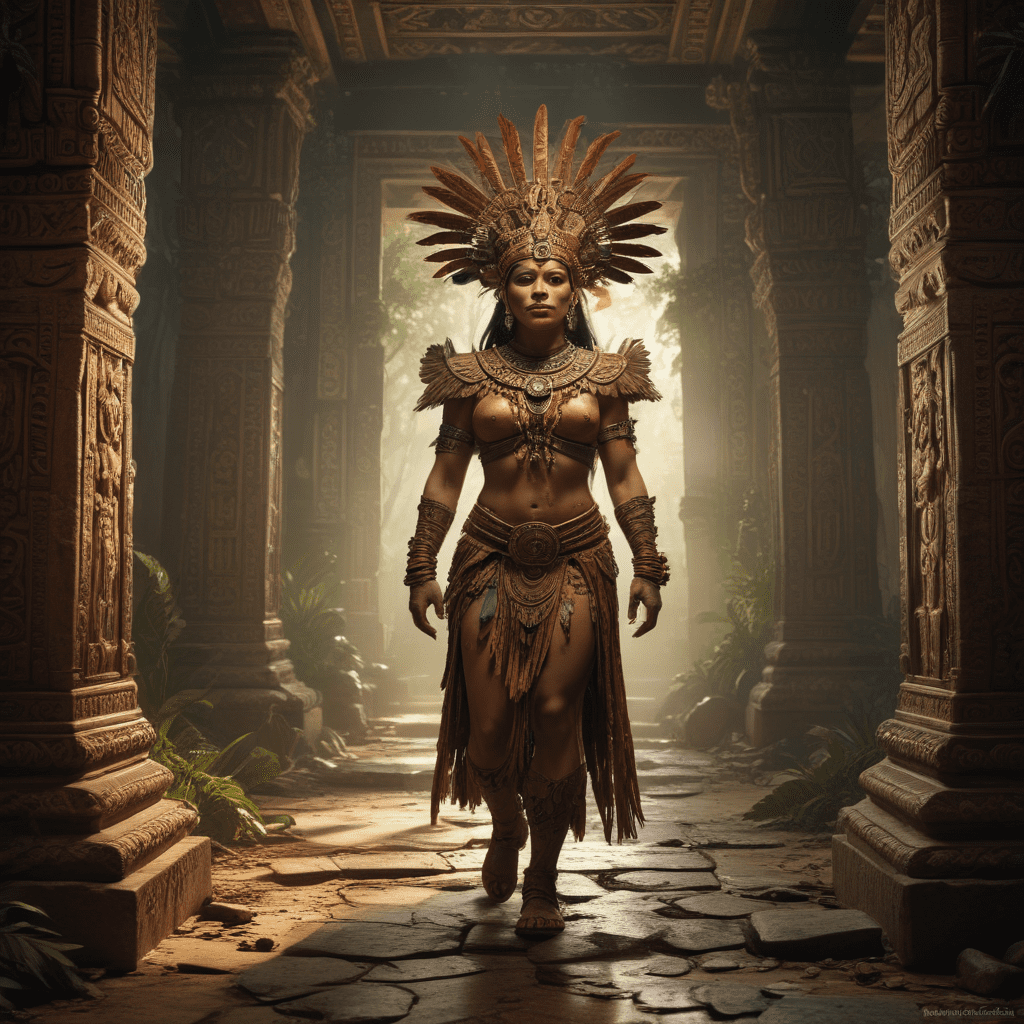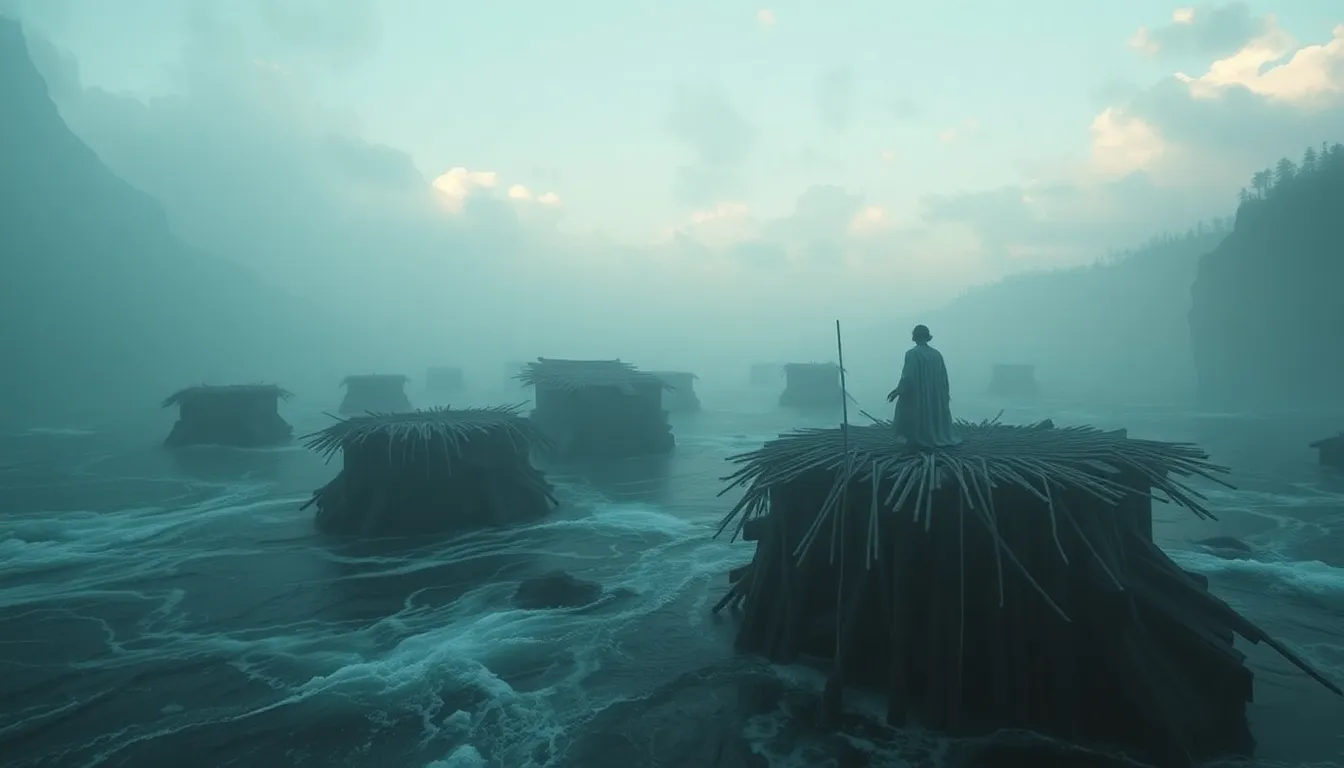Mayan Mythology and the Underworld: Navigating Xibalba
1. Introduction
For centuries, the intricate tapestry of Mayan mythology has captivated anthropologists, archaeologists, and enthusiasts alike. Deeply woven into the fabric of Mesoamerican culture, Mayan myths served as vessels of cultural knowledge, transmitting values, beliefs, and understandings of the cosmos through captivating narratives. Among these narratives, few hold as much significance as the myths surrounding Xibalba, the Mayan underworld, a realm of darkness, trials, and ultimately, rebirth.
This outline delves into the depths of Mayan mythology, exploring the intricate landscape of Xibalba, the perilous journeys undertaken by heroes through its treacherous depths, and the profound symbolism embedded within this fascinating realm.
2. The Mythological Landscape of Xibalba
In Mayan cosmology, Xibalba, meaning "place of fear," is depicted as a subterranean realm shrouded in perpetual darkness, a stark contrast to the vibrant world above. This underworld is not merely a physical location; it represents the realm of death, a place of judgment and transformation. Xibalba is described as a labyrinthine underworld, consisting of nine levels, each presenting unique challenges and trials to those who dare enter its domain.
These levels are not merely geographical locations but symbolic representations of obstacles one must overcome in life and death. Each level presents metaphorical challenges, testing the courage, wit, and resilience of those who venture into its depths. The trials faced within Xibalba serve as allegories for the struggles encountered in the mortal realm, mirroring the challenges of life, death, and the journey towards spiritual enlightenment.
Presiding over this formidable underworld are the Lords of Xibalba, powerful deities who embody death, disease, and decay. These deities, often depicted with skeletal features and grotesque adornments, represent the formidable forces of the underworld, testing the resolve of those who seek to navigate its treacherous paths.
3. The Hero's Journey through Xibalba
The concept of the hero's journey plays a central role in Mayan mythology, particularly in narratives involving descents into Xibalba. These journeys, undertaken by brave heroes, often involve quests for knowledge, redemption, or the retrieval of vital elements for the survival of their people. The motivations of these heroes vary, but they are invariably driven by a profound sense of duty, courage, and a willingness to confront the unknown.
The trials faced by these heroes within Xibalba are not merely physical challenges; they are symbolic tests of character, intelligence, and resilience. Each trial serves as a metaphor for the challenges encountered in life, testing the hero's ability to overcome adversity and emerge victorious. The successful completion of these trials signifies the hero's transformation, signifying their preparedness to transcend the mortal realm and attain a higher state of being.
4. The Importance of Maize in Xibalba Mythology
Maize, a staple crop in Mayan culture, holds profound significance in Xibalba mythology. This life-sustaining grain is not only a source of nourishment but also a symbol of regeneration and rebirth. In Mayan myths, maize is often associated with the underworld, serving as a vital element for the survival of those who journey into Xibalba.
Maize offerings and rituals played a significant role in Mayan religious practices. These offerings were believed to appease the deities of Xibalba and ensure the safe passage of the deceased into the underworld. The symbolic connection between maize and Xibalba underscores the Mayan belief in the cyclical nature of life, death, and rebirth. Maize, a symbol of life, becomes intertwined with the realm of death, highlighting the belief that death is not an end but a transformation, a gateway to renewal.
5. The Dualistic Nature of Xibalba
Xibalba is not merely a place of darkness and despair; it is also a place of renewal and transformation. While it represents the realm of death, it also holds the potential for rebirth and spiritual enlightenment. The trials faced within Xibalba serve not only to test the hero but also to prepare them for a higher state of being.
This duality is reflected in the Mayan belief in the cyclical nature of life and death. Xibalba is seen as an integral part of this cycle, a realm where individuals shed their earthly burdens and prepare for rebirth in the spiritual realm. The underworld, therefore, becomes a necessary stage in the journey towards enlightenment, a place of death and transformation leading to spiritual renewal.
6. The Symbolism of Xibalba in Mayan Culture
The symbolism of Xibalba extends far beyond its role as the underworld in Mayan mythology. This enigmatic realm served as a powerful metaphor for various aspects of Mayan life, influencing their understanding of death, renewal, and the balance between the physical and spiritual realms.
Xibalba was often associated with caves, cenotes, and other natural features that served as entry points to the underworld. These physical locations became symbolic representations of the journey into the unknown, the realm of death and transformation. The darkness and treacherous nature of these places mirrored the challenges and uncertainties faced in the afterlife.
The trials and tribulations faced by heroes within Xibalba served as metaphors for the challenges encountered in daily life. The battles against disease, poverty, and natural disasters were seen as reflections of the struggles faced within the underworld. Overcoming these challenges in the mortal realm was seen as preparation for the ultimate test in Xibalba, the journey towards spiritual enlightenment.
The cyclical nature of life and death is deeply embedded in Mayan beliefs, and Xibalba played a pivotal role in this cycle. While the underworld represented death, it was also seen as a place of regeneration and rebirth. The trials faced within Xibalba were believed to purify and prepare individuals for their return to the world of the living, either in a spiritual or physical form.
The Lords of Xibalba, despite their fearsome appearance, also held symbolic significance. These deities represented the forces of decay, death, and transformation, aspects that are essential for the continuous cycle of life and renewal. Their presence in Xibalba served as a reminder of the inevitability of death but also the potential for rebirth and regeneration.
7. Xibalba and the Mayan Calendar
The Mayan calendar, with its complex cycles and intricate calculations, reflects the profound influence of Xibalba on Mayan cosmology. The calendar, with its 260-day Tzolkin cycle and 365-day Haab cycle, was believed to govern the cyclical nature of time, mirroring the cycles of life, death, and rebirth.
The 260-day Tzolkin cycle, consisting of 20 named days and 13 numbered days, was associated with Xibalba. Each day within this cycle held symbolic significance, representing various aspects of the underworld and the trials faced within it. The cyclical nature of the Tzolkin calendar mirrored the belief in the continuous journey through life, death, and rebirth.
The 365-day Haab cycle, aligned with the solar year, was associated with the agricultural cycle and the changing seasons. This cycle also held symbolic connections to Xibalba, as the underworld was seen as a place of darkness and regeneration, much like the winter months. The cyclical nature of the Haab calendar reflected the belief in the continuous cycle of death and renewal, with the winter months representing a period of dormancy followed by the rebirth of life in the spring.
8. Archaeological Evidence of Xibalba
Archaeological evidence provides fascinating insights into the Mayan belief in Xibalba. Excavations at various Maya sites have uncovered elaborate tombs, murals, and sculptures depicting scenes from Xibalba mythology. These artistic representations offer invaluable clues about the Mayan understanding of the underworld and its significance in their belief system.
One notable example is the tomb of King Pakal at the site of Palenque. The intricate carvings on Pakal's sarcophagus depict his journey through Xibalba, with scenes of trials, transformations, and ultimately, his ascension to the heavens. This elaborate tomb serves as a testament to the importance of Xibalba in Mayan beliefs and their preoccupation with the afterlife.
Archaeological evidence also reveals the importance of caves and cenotes as entry points to Xibalba. These natural features were often adorned with carvings and sculptures depicting deities and scenes from underworld mythology. The presence of these features near Mayan settlements suggests that Xibalba was not merely a mythical realm but an integral part of their understanding of the physical world and its connection to the spiritual realm.
9. The Legacy of Xibalba
The legacy of Xibalba continues to resonate in various aspects of Mayan culture and beyond. The influence of this underworld mythology can be seen in contemporary art, literature, and popular culture. The themes of death, rebirth, and the journey through the underworld continue to captivate audiences worldwide, showcasing the enduring power of Mayan mythology.
The symbolism of Xibalba continues to inspire artists and writers who draw upon its rich imagery and profound themes. The challenges faced by heroes within Xibalba serve as metaphors for the struggles encountered in modern life, reminding us of the resilience of the human spirit and the potential for transformation in the face of adversity.
The legacy of Xibalba extends beyond the realm of art and literature. Its influence can be seen in various aspects of contemporary society, from psychology and philosophy to environmentalism and sustainability. The concept of the underworld as a place of transformation and rebirth continues to resonate with individuals seeking to understand the cycles of life and death, both on a personal and global level.
10. Conclusion
Xibalba, the Mayan underworld, stands as a testament to the rich tapestry of Mayan mythology and its profound influence on their understanding of the cosmos. This enigmatic realm served as a place of death, transformation, and ultimately, rebirth, reflecting the cyclical nature of life and the interconnectedness of the physical and spiritual worlds. Through its intricate symbolism, Xibalba continues to captivate and inspire, offering valuable insights into the human condition and our enduring fascination with the mysteries of life and death.
FAQ
What is Xibalba?
Xibalba is the Mayan underworld, a realm of darkness, trials, and ultimately, rebirth.
What are the characteristics of Xibalba?
Xibalba is described as a labyrinthine underworld with nine levels, each presenting unique challenges and trials.
Who are the Lords of Xibalba?
The Lords of Xibalba are powerful deities who govern the underworld, representing death, disease, and decay.
What is the significance of maize in Xibalba mythology?
Maize, a staple crop in Mayan culture, is associated with Xibalba as a symbol of regeneration and rebirth.
What is the dualistic nature of Xibalba?
Xibalba is both a place of death and a source of renewal, reflecting the cyclical nature of life and death.
How did Xibalba influence Mayan culture?
Xibalba served as a metaphor for various aspects of Mayan life, influencing their understanding of death, renewal, and the balance between the physical and spiritual realms.
What is the legacy of Xibalba?
The legacy of Xibalba continues to resonate in art, literature, and contemporary society, inspiring individuals with its themes of transformation and the enduring power of the human spirit.



